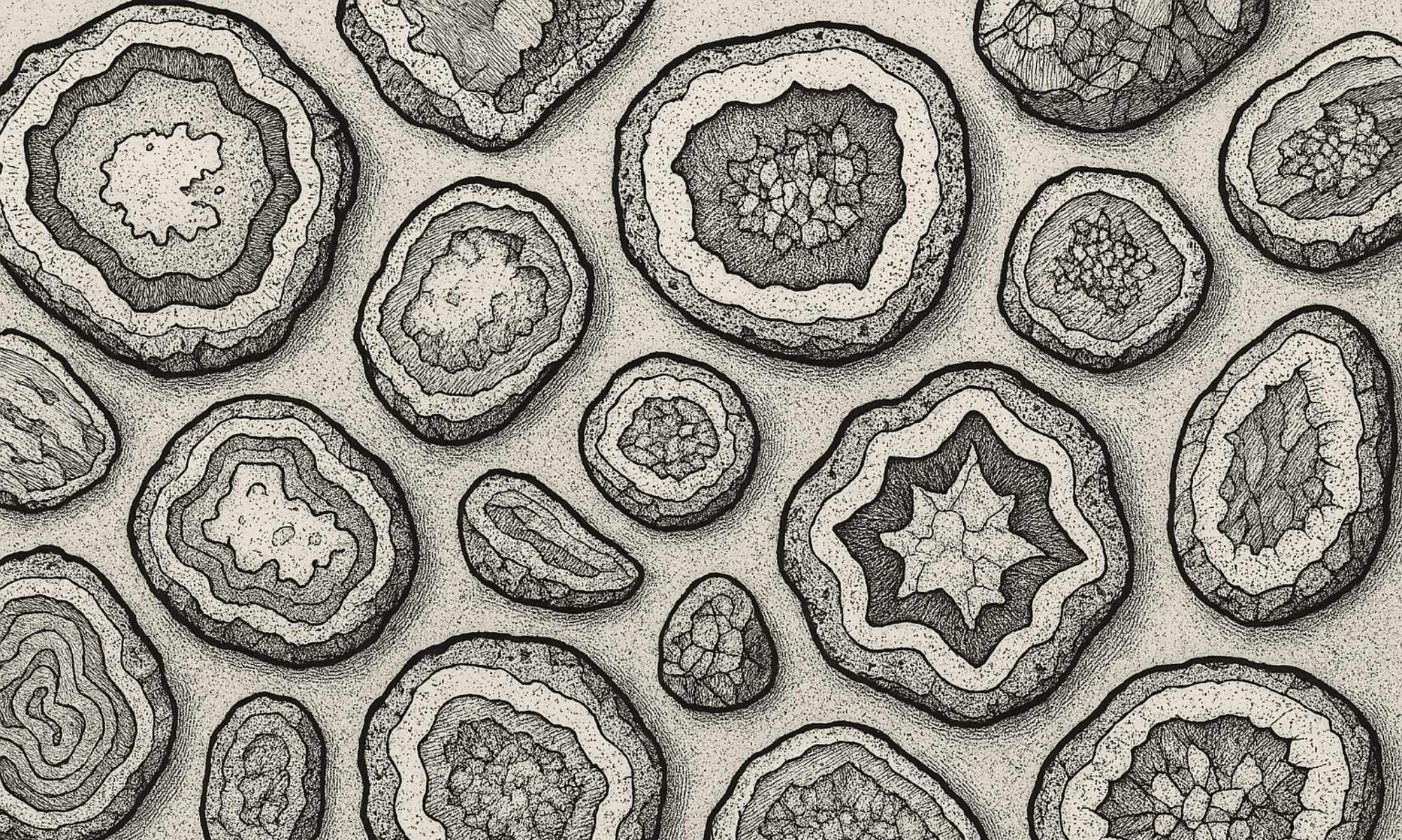Washington Thundereggs: Volcanic Secrets from the Evergreen State
When it comes to thundereggs, Oregon usually steals the spotlight—but just across the border, Washington State holds its own quiet stash of volcanic nodules that are every bit as fascinating. With rugged mountains, ancient lava flows, and a deep geologic history, Washington offers a lesser-known but highly rewarding hunting ground for thunderegg lovers.
These eggs may not be as widespread or commercialized as their Oregon cousins, but for those who know where to look, Washington thundereggs offer bold interiors, fascinating matrix textures, and a healthy dose of mystery.
What Are Washington Thundereggs Like?
Most thundereggs in Washington form in ancient rhyolitic ashflows and lava domes that erupted during the Miocene epoch. Silica-rich fluids filled in the cooling cavities over millions of years, forming agate, jasper, quartz, and occasionally opal in distinctive patterns.
Common features include:
- Bold color contrasts—deep reds, oranges, grays, and black
- Strong fortification banding or mossy interiors
- Dense, chunky matrix often stained with iron or manganese
- Unique “dirty” textures that give them a raw, natural look
They’re not always pretty on the outside, but slice one open, and you might get a surprise as dramatic as anything found south of the Columbia River.
Notable Washington Thunderegg Localities
Washington’s volcanic zones stretch from the Cascades to the Columbia Plateau, and a few locations are known among dedicated rockhounds:
Saddle Mountains
Located in central Washington near Mattawa and Beverly, this area has produced thundereggs with smoky quartz, chalcedony, and sometimes botryoidal textures. The outer matrix can be rough and deeply weathered, but interiors often have excellent polish potential.
Blue Agate Mine (near Ellensburg)
While better known for blue agate nodules and geodes, this area occasionally produces eggs with fortification agate interiors and soft blue-gray tones. Some overlap exists between thundereggs and agate nodules here, geologically speaking.
Red Top Mountain
Near Cle Elum in the central Cascades, Red Top is a classic rockhounding spot with access to thundereggs, agate, and jasper. Eggs here are often smaller, with rich internal detail, and are a favorite for families and beginners.
Fir Road Area (Columbia Basin)
A somewhat obscure site followed by a few local diggers, Fir Road and surrounding ancient Columbia River gravels sometimes turn up rhyolite nodules with agate centers—likely remnants of eroded thundereggs from nearby volcanic flows. These aren’t always textbook thundereggs, but they’re close cousins, and just as exciting to cut.
Are They Easy to Find?
Not really—and that’s part of the fun. Washington thundereggs are often hidden under deep soils, weathered rock layers, or mixed in with basalt. They don’t always have clear surface clues, and many areas are remote or overgrown. But with research, persistence, and a good shovel, they can be found.
Also, unlike Oregon, Washington doesn’t have as many open fee-dig sites for thundereggs. Most collecting requires scouting on public land (BLM or DNR), rockhound clubs, or gaining permission on private property.
Lapidary Use and Collector Value
Washington thundereggs are often dense and stable—ideal for cutting and polishing. Many take a mirror finish and display bold interior patterns. Some contain:
- Red or orange jasper centers
- White fortification agate
- Smoky or druzy quartz pockets
- Manganese dendrites or mossy inclusions
For collectors, they represent a more rugged, “wild” style of egg—less predictable, but highly rewarding when you find a good one.
Tips for Hunting Washington Thundereggs
- Do your homework – Many locations are underdocumented. Old club newsletters and BLM rockhounding maps are your best bet.
- Bring the right tools – Hard rock digging is the norm. A pick, shovel, and pry bar are essential.
- Cut before you judge – Washington eggs can look gnarly on the outside but stunning inside.
- Be mindful of land use – Some areas are closed to collecting or require permits. Always double-check boundaries and rules.
Underrated, Undiscovered, and Unforgettable
Washington thundereggs may not have the same fame as those from Oregon or Mexico, but that’s exactly what makes them special. They’re under-the-radar gems—quiet, rare, and full of character. Whether you’re slicing for slabs or hunting for display pieces, these volcanic time capsules hold the spirit of the Pacific Northwest’s raw, untamed geology.
Dig a little deeper, and Washington might just become your new favorite thunderegg hunting ground.
